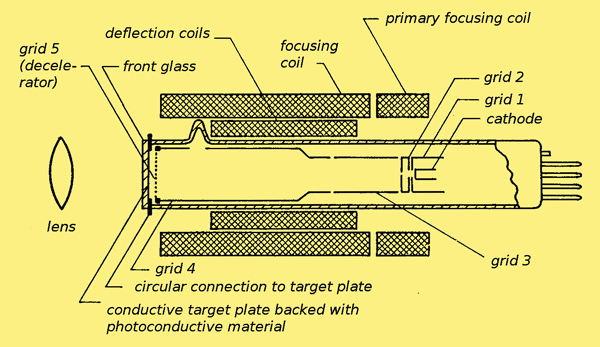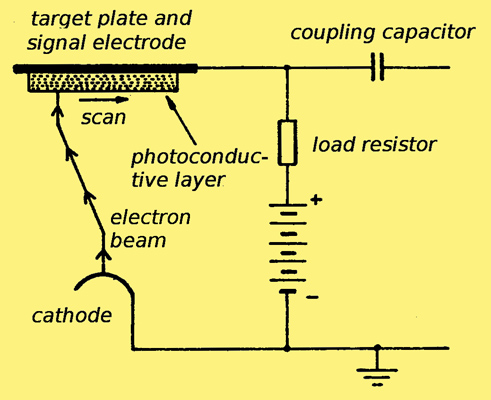|

See also Hitachi 8844 Videcon
Whether or not it is worthwhile applying television techniques to industrial processes depends very much on whether the camera equipment, in particular, can be made sufficiently simple and inexpensive. In this country Pye have recognised this requirement by introducing a small and light camera containing an exceptionally small pick-up tube, Now, another miniature tube designed for such applications has been put on the market by RCA - the type 6198 Videcon. It measures 1 inch in diameter and 6.25 in long.

Basic structure of the videcon camera tube. The photosensitive layer is made of antimony trisulfide (Sb2S3).
The light-sensitive element is a photoconductive layer, and has a sensitivity, which permits the televising of scenes with 100-200 foot-candles of incident illumination. The tube has magnetic focusing and deflection, and requires DC voltages on the electrodes of no more than 300 Volts.

Extracting the videcon signal.
In operation, the photo-conductive layer acts as a leaky capacitor, and when the scene is focused on it the 'plate' nearest the scanning beam acquires a corresponding pattern of positive charges. In the process of scanning, the deposition of electrons from the low velocity beam reduces these charges on the near 'plate' to the potential of the cathode. As a result there are changes in the potential difference between the two 'plates' of the photoconductive layer, and these constitute the output signal.
Thanks to Stig Comstedt for supplying the diagrams for this article.
|